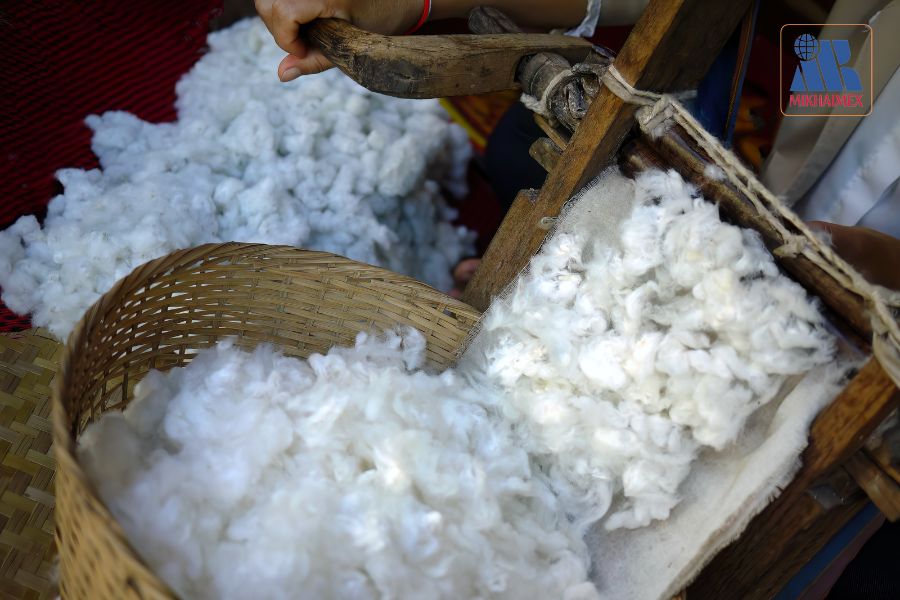Factors Affecting the Fluctuation of Cotton Prices: Expert Insights
Cotton prices are a crucial factor directly impacting the textile and fashion industries. Understanding the factors influencing cotton prices helps businesses effectively plan their operations and make informed purchasing decisions. Below are key factors affecting cotton prices that you should be aware of.

Today’s Cotton Prices: June 11, 2024
Global Cotton Prices
Today, global cotton prices continue to rise. On the New York (ICE) futures exchange, cotton raw material prices for March contracts increased by 0.25% to 1.6885 USD/pound. The high demand for cotton from textile mills has driven prices up. According to the Vietnam Textile and Apparel Association (VITAS), Vietnam’s textile and garment exports reached 43.3 billion USD in 2023, up 19.2% compared to 2022. Of this, cotton and cotton products accounted for 1.75 billion USD, up 23.2%. Additionally, favorable weather conditions in major cotton-producing countries like China and India have supported cotton prices.
Domestic Cotton Prices
Domestic cotton prices today also continue to rise, with the price of raw cotton fiber type 2.5/32 currently at 145,000 VND/kg, up 2,000 VND/kg compared to yesterday. Domestic cotton prices are expected to continue their upward trend due to rising global cotton prices and high domestic demand.
Types of Cotton in Use

1. Natural Cotton
Natural cotton is harvested from the cotton plant’s boll and has many advantages, such as being soft, breathable, and highly absorbent. However, natural cotton also has disadvantages like high cost and susceptibility to yellowing and fading over time. Natural cotton is divided into two main types:
- Long-Staple Cotton: Long fibers, soft, often used for making fabrics and clothing.
- Short-Staple Cotton: Shorter, coarser fibers, often used for making paper, insulation materials, and filtration materials.
2. Synthetic Cotton
Synthetic cotton is made from synthetic fibers like polyester and nylon. Synthetic cotton has many advantages, such as being cheaper, more colorfast, and resistant to yellowing. However, it lacks the softness and breathability of natural cotton. Common types of synthetic cotton include:
- Polyester Cotton: High durability, good absorbency, and resistance to yellowing and fading over time.
- Nylon Cotton: High durability and good water resistance.
- Acrylic Cotton: Good heat retention properties.
Key Factors Influencing Cotton Prices

Supply and Demand
Supply and demand are crucial factors determining cotton prices and trading volumes in the market. Cotton supply depends on production, productivity and quality, cultivated area, production and processing costs, technology used, and government support policies. Demand depends on consumer needs and purchasing power. When supply and demand are balanced, cotton prices stabilize. Conversely, if supply exceeds demand, cotton prices drop; if demand exceeds supply, cotton prices rise.
Exchange Rates, Particularly USD
Exchange rates, especially the USD, significantly impact cotton prices. When the USD/VND exchange rate rises, the cost of importing cotton increases, raising domestic cotton prices. Conversely, when the USD/VND exchange rate falls, import costs decrease, reducing domestic cotton prices. Factors affecting exchange rates include inflation, interest rates, income, trade exchanges, and central bank policies.
Weather Conditions
Weather and natural disasters directly affect the productivity and quality of cotton plants, indirectly impacting cotton prices. Favorable weather stabilizes cotton prices, while adverse weather conditions like droughts and floods raise concerns about supply shortages, driving up prices.
Tax Policies and Trade Relations
Tax policies and trade relations of cotton-producing and consuming countries impact production, import, and export costs. Taxes applied to cotton include import tax, value-added tax (VAT), special consumption tax, and environmental protection tax. These tax rates can change based on government decisions to regulate domestic and international cotton supply and demand.
Cotton Price Forecast

In the coming period, cotton prices may be influenced by several factors, including global economic fluctuations, supply and demand dynamics, and changes in trade and tax policies. Forecasts suggest that cotton prices may rise due to economic recovery post-pandemic and increased demand for textile products. However, factors like climate change and economic instability could cause unforeseen fluctuations in cotton prices.
Risks and Benefits of Investing in Cotton
Risks:
- Price Volatility: Cotton prices can fluctuate significantly due to factors like weather, trade policies, and global economic changes.
- Policy Risks: Changes in tax and trade policies can affect import and export costs.
- Market Risks: Competition from alternative fibers like synthetic fibers and wool can affect demand and prices for cotton.
Benefits:
- Stable Demand: Cotton is a primary raw material in the textile industry, with stable demand from clothing and home textile manufacturers.
- Growth Potential: Global economic recovery and increased demand for textile products can boost cotton prices.
- Environmental Benefits: Using organic cotton and sustainable farming methods helps protect the environment and meet the growing consumer demand for green products.
Conclusion
Understanding the factors influencing cotton prices is crucial for businesses in the textile industry. From managing supply and demand, handling exchange rate fluctuations, to responding to weather impacts, all need careful consideration to develop effective business strategies.
Minh Khai Textile Company closely monitors these factors to ensure the supply of high-quality cotton products at reasonable prices, meeting diverse customer needs and maintaining market competitiveness. We are committed to providing premium cotton towels that are environmentally friendly and contribute to sustainable development.


